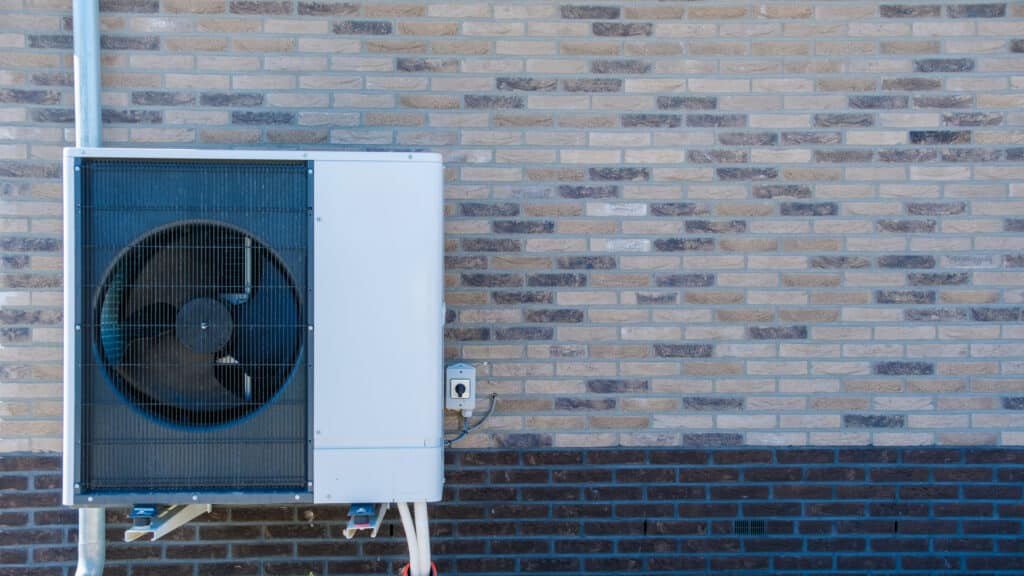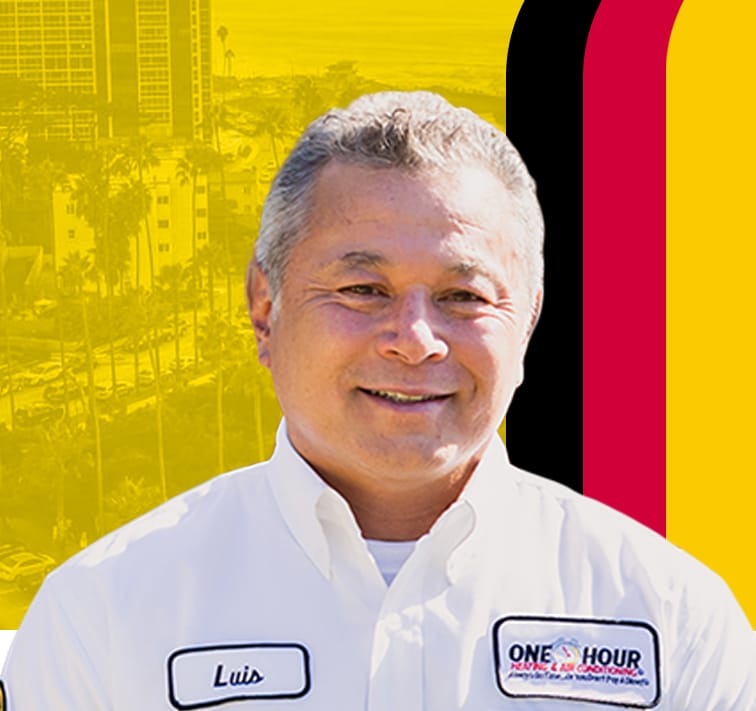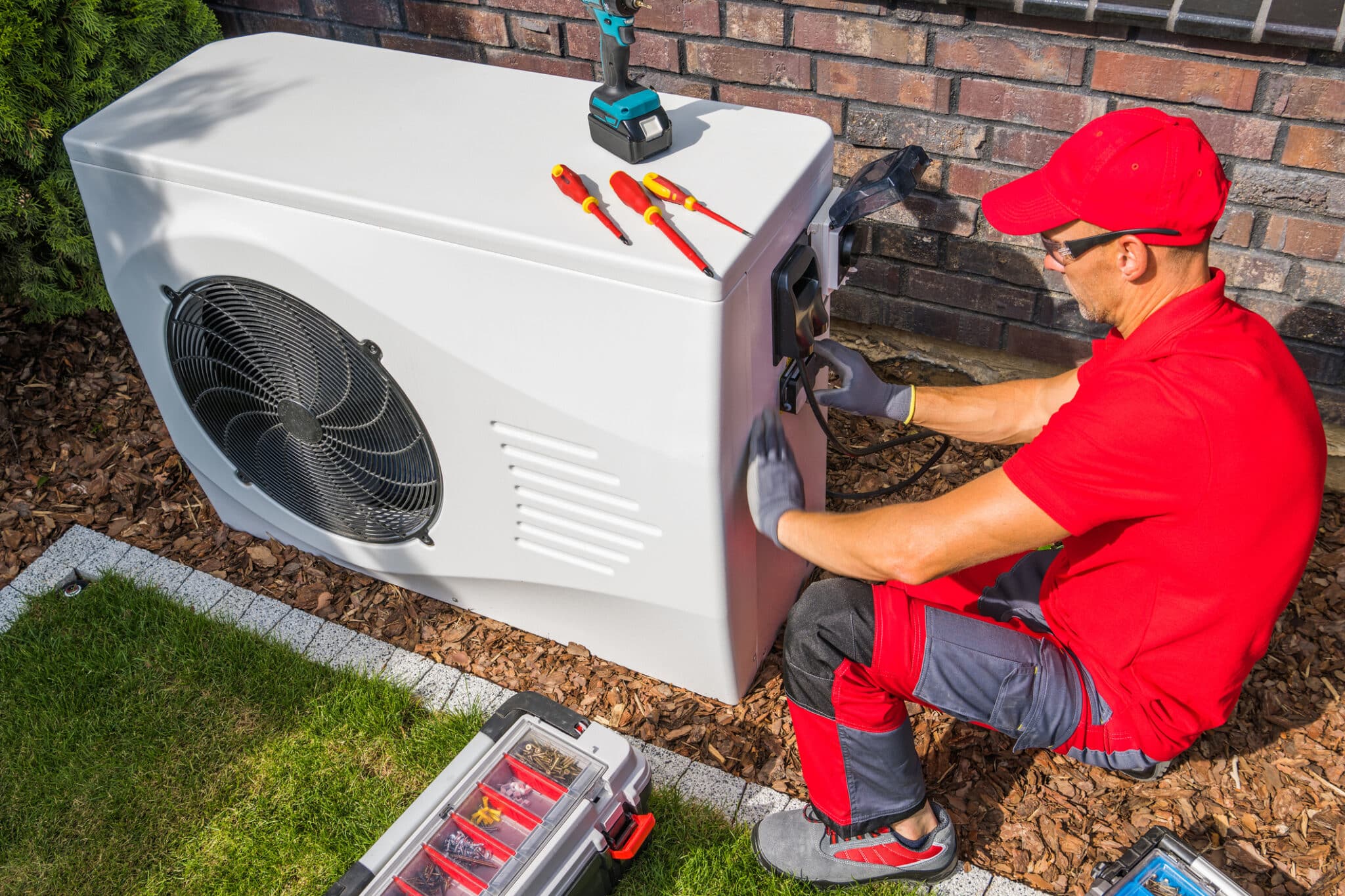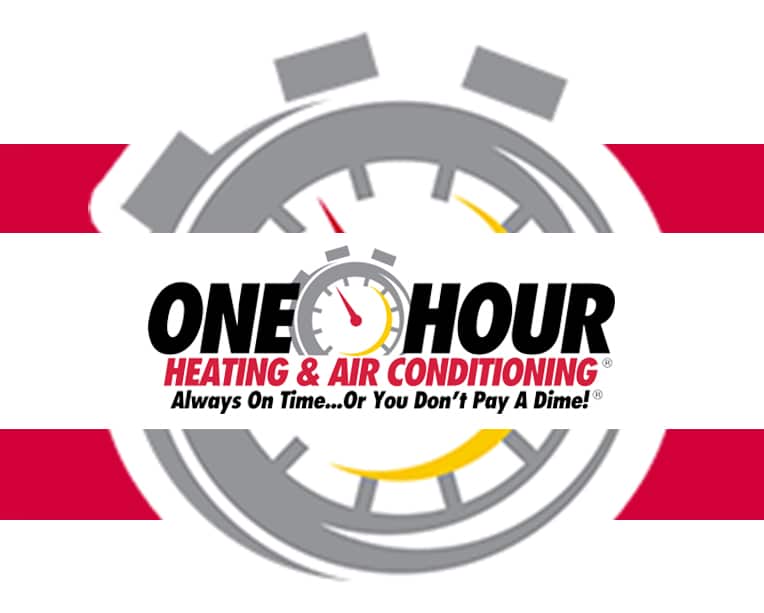Wondering if a heat pump is the right fit for keeping your San Diego home cozy during the winter? While winter here isn’t exactly harsh, staying warm on those cooler nights still matters. But unlike traditional heaters, heat pumps work differently, which can be a real advantage in mild climates like San Diego’s.
In this guide, we’ll break down everything you need to know about heat pumps, including how they work, the types available, and whether they’re worth it for our unique winter climate. Let’s dive in!
Understanding San Diego’s Winter Climate
San Diego’s winter climate is generally mild, with temperatures ranging from the mid-40s to mid-60s °F, bringing cool nights and sunny days. Unlike colder regions with snow and freezing temperatures, San Diego doesn’t require powerful heating systems.
In this climate, homeowners aren’t combating extreme cold but simply looking to stay comfortable during cooler spells. This allows for more energy-efficient options that can maintain warmth without high energy consumption. Choosing a heating system that aligns with these specific needs helps ensure comfort while keeping costs down.
What is a Heat Pump and How Does it Work?
A heat pump may sound complex, but it operates on a straightforward principle: rather than creating heat, it transfers it from one place to another. In the winter, the pump absorbs heat from the outside air—even when it’s chilly outside—and moves it into your home to keep things warm.
This process is possible because of refrigerant, a special fluid that can capture and release heat as it cycles between gas and liquid states. During the summer, a heat pump reverses its operation, drawing heat from inside your home and releasing it outside, effectively acting as an air conditioner.

Types of Heat Pumps
There are several types of heat pumps, each with unique features and benefits that make them suitable for different climates and home setups. In San Diego, where winters are mild, some types may be more effective than others. Here’s a look at the most common types of heat pumps and how they can fit into your home’s heating and cooling needs.
Air-Source Heat Pumps
Air-source systems are the most common type, drawing warmth from the outdoor air and transferring it indoors. They work by circulating refrigerant through coils to absorb and release heat, similar to how a refrigerator operates.
In winter, they pull warmth from the outside air into your home, while in summer, they reverse the process to cool your space. For a climate like San Diego’s, air-source units are highly efficient, as they don’t need to combat extreme cold.
Pros include energy efficiency and lower operational costs in mild climates, though they may experience slight drops in efficiency if temperatures dip too low—a rare issue in San Diego.
Ground-source (Geothermal) Heat Pumps
Ground-source, or geothermal, heat pumps operate by transferring heat from the ground rather than the air. Underground temperatures are more stable year-round, allowing these systems to be highly efficient in both heating and cooling modes.
They use a series of pipes buried in the ground (either horizontally or vertically) through which refrigerant flows, absorbing or releasing heat. In San Diego, geothermal systems can work effectively, but the mild winters may not fully justify the high installation cost.
Pros include long-term energy savings and durability, as these systems can last decades with minimal maintenance. Cons involve higher upfront costs and the space required for ground installation, which may not be feasible in all San Diego homes.
Ductless Mini-Split Heat Pumps
Ductless mini-split heat pumps are a versatile option, ideal for homes without ductwork or for heating and cooling specific rooms. These systems consist of an outdoor unit connected to one or more indoor units, which can be mounted on walls or ceilings.
Mini-splits allow for zoned heating, meaning you can control the temperature in individual rooms independently. In San Diego, ductless systems are perfect for homes with open floor plans or areas that need extra heating without altering the whole house’s temperature.
Advantages include high efficiency, flexibility in placement, and ease of installation. Limitations can be the cost of installing multiple units if you need extensive coverage, as well as the visibility of indoor units, which may not blend with all interior styles.
Absorption Heat Pumps
Absorption systems, sometimes called gas-fired units, differ from typical electric models by using a heat source like natural gas, propane, or even solar-heated water to operate. They work similarly to air-source models but are more efficient in larger homes or commercial spaces where electric power may be limited or costly.
In a climate like San Diego’s, absorption units can provide energy savings by reducing reliance on electricity while still offering reliable heating and cooling. Benefits include flexibility in energy sources and suitability for large spaces, though they can be more expensive to install and are less common in residential applications.
Hybrid Systems
Hybrid systems combine traditional units with a backup furnace that runs on gas or oil. This dual setup allows the system to automatically switch to the furnace during exceptionally cold days and use the primary system during milder conditions, optimizing efficiency and comfort.
In a mild climate like San Diego’s, hybrids may not need to activate the backup furnace often, but they offer flexibility for homes that experience occasional cold spells. Advantages include optimized energy use and consistent comfort, though installation costs can be higher due to the additional equipment needed.
Benefits of Using a Heat Pump in San Diego’s Winter
These systems offer several advantages for San Diego homeowners, especially given the region’s mild winter temperatures. From energy savings to environmental perks, this type of heating and cooling solution can be an ideal choice for efficient and effective home comfort.
Energy Efficiency
One of the biggest benefits is energy efficiency. Unlike traditional heating systems that burn fuel or rely heavily on electricity, these systems move existing warmth rather than creating it, which requires less energy.
In San Diego’s mild climate, they can maintain a comfortable indoor temperature without excessive strain, resulting in lower energy bills. Since they don’t need to produce heat from scratch, they can often deliver up to three times the amount of warmth relative to the electricity they consume, making them a smart, cost-effective option.
Environmental Impact
These heating and cooling systems are also a greener choice for maintaining a comfortable home. By using less electricity than other methods, they help reduce greenhouse gas emissions and lower your household’s carbon footprint. In San Diego, where temperatures rarely dip significantly, these units perform efficiently with minimal strain on energy resources.
Since they don’t burn fossil fuels like gas or oil, they contribute to cleaner air and support environmental sustainability. Over time, they offer an eco-friendly option that aligns well with California’s renewable energy goals and environmental initiatives.
Versatility for Year-Round Comfort
A significant perk of these systems is their versatility—they function as both a heater and an air conditioner. This dual-purpose capability means you can rely on a single unit to keep your home comfortable year-round without the need for separate systems.
In the winter, it provides gentle, steady warmth, while in the summer, it cools your home by reversing the heat transfer process. In a place like San Diego, where seasons are mild, this solution can handle all your climate control needs with ease, providing consistent comfort while simplifying your home’s HVAC setup.
Potential Drawbacks of Heat Pumps in Mild Climates
While these systems offer plenty of benefits, there are a few drawbacks to consider, especially in a mild climate like San Diego. It’s essential to weigh these potential downsides to see if this choice truly meets your home’s needs.
Initial Cost and Installation Challenges
One of the most significant hurdles with this type of system is the initial cost, which can be higher than traditional heating methods. The expense of purchasing and installing it can be a considerable upfront investment, especially for ground-source (geothermal) systems that require a more extensive setup.
In San Diego, where heating demands aren’t high, it might take longer to recoup this initial investment through energy savings. Additionally, installation must be handled by a professional, and depending on your home’s layout, this could involve some modifications, particularly if ductwork or ground loops are required.
Performance in Extremely Cold Weather
Although not a frequent issue in San Diego, it’s worth noting that these systems may struggle in extreme cold. They work by transferring warmth from the air or ground, and when temperatures drop significantly, efficiency can decrease, leading to less effective heating.
While this isn’t typically a concern in San Diego’s mild climate, homeowners should be aware that on rare colder nights, supplemental heating may be necessary. Thankfully, with San Diego’s temperate weather, this isn’t a common issue, but it’s something to consider when comparing with traditional heating options.
Comparing Heat Pumps to Other Heating Options in San Diego
When it comes to heating in San Diego’s mild climate, there are several options to choose from, each with its own set of benefits and drawbacks. Here’s how this option stacks up against other popular heating methods for local homes.
Heat Pump vs. Furnace
Furnaces are a common choice in colder areas, as they provide powerful, consistent heat. However, in San Diego, where extreme cold is rare, a furnace may be more than necessary. Furnaces burn fuel or use electricity to create warmth, making them less efficient than a system that only transfers heat.
While furnaces can deliver quick warmth on cold nights, they typically have higher energy consumption. For those in San Diego, this efficient, dual-function heating and cooling solution offers a more energy-efficient and cost-effective alternative for mild winters.
Heat Pump vs. Electric Baseboard Heating
Electric baseboard heating systems are straightforward and don’t require ductwork, making them easy to install. However, they can be expensive to run since they use electricity to generate heat directly.
This direct use of electricity results in higher utility bills compared to a system that moves warmth instead of creating it. While baseboard heaters can work well for spot heating or small rooms, a dual-function system is generally a more practical option for an entire home, especially if you want energy savings and a more even distribution of warmth.
Heat Pump vs. Space Heaters
Space heaters are often used for quick, targeted warmth in specific rooms, making them a convenient option for temporary heating. However, they aren’t an ideal solution for whole-home comfort. While effective in small areas, space heaters can be inefficient and even unsafe if left running for long periods.
In contrast, the air-exchange system provides consistent, energy-efficient comfort for the entire home. For those looking to stay comfortable without constantly moving space heaters around, an air-exchange setup is a much more versatile and cost-effective choice.
Is a Heat Pump the Right Choice for Your Home?
Deciding if this type of system is ideal for your San Diego home involves weighing several factors. Although it’s highly efficient and suitable for mild climates, each home has unique requirements that should be considered.
Factors to Consider Before Installing
Before deciding on this type of system, it’s essential to weigh a few key factors to ensure it’s the right choice for your home.
- Home size and layout: Larger homes or those with unique layouts may require additional units or adjustments to maintain even temperatures throughout. For open floor plans, a single unit might be enough, but multiple floors or separated rooms could need extra equipment.
- Budget: The initial cost can be higher than traditional heating options, though the potential for long-term energy savings often makes up for it. Consider both upfront installation and any maintenance costs when planning your budget.
- Climate compatibility: Given San Diego’s mild winter, this system is highly efficient for local needs. It might not perform as well in extreme cold, but it’s ideal for areas like San Diego, where temperatures rarely dip too low.
- Eco-friendly goals: If reducing your home’s carbon footprint is important, this type of system offers an energy-efficient, environmentally friendly option that minimizes reliance on fossil fuels.
- Long-term savings potential: Beyond immediate cost savings, this system can increase home value and reduce utility expenses over time, making it a solid investment for eco-conscious homeowners.
Taking these factors into account can help you make a well-informed decision that aligns with both your home’s needs and your energy goals.
Getting a Professional Assessment
To determine if this setup is the best match for your heating and cooling needs, consulting with a heating and cooling professional is crucial. They can evaluate your home’s specific requirements, ensuring that your system will operate efficiently in San Diego’s climate.
A pro can also guide you through any installation challenges or considerations, especially if your home needs modifications. Choosing a reputable installer in San Diego not only ensures quality installation but can also provide valuable insights into maximizing your energy savings and comfort.
Ready to Experience Efficient Comfort This Winter?
Upgrade your home’s comfort with a system perfectly suited for San Diego’s mild winter climate! At One Hour Heating & Air Conditioning San Diego, we specialize in energy-efficient heating solutions tailored to your needs.
Our team is here to help you explore the benefits of heat pumps and ensure a cozy, efficient winter. Contact us today to learn more about the right system for your San Diego home!

FAQs
Do heat pumps work well in San Diego’s climate?
Yes, they’re particularly suited to San Diego’s mild winters. Because they don’t have to combat extreme cold, they operate efficiently and can keep homes comfortable without excessive energy use.
Are heat pumps cost-effective compared to other heating systems?
They are generally more cost-effective over time due to their energy efficiency. While initial installation can be higher, the savings on monthly bills often make up for it in the long run, especially in a mild climate.
Can a heat pump replace an air conditioner?
Absolutely! These systems are designed to provide both heating and cooling, so they can replace an air conditioner and even a furnace in most cases. This versatility is a huge advantage in a climate with mild winters and warm summers like San Diego.
What is the average lifespan of a heat pump?
On average, these systems last around 15 years, though with proper maintenance, they can sometimes last even longer. Routine check-ups can help extend their lifespan and maintain efficiency.
How much maintenance does a heat pump need?
Maintenance needs are relatively low, typically involving filter changes and occasional professional check-ups to ensure everything runs smoothly. Regular upkeep can keep it running efficiently and prevent issues down the line.



















